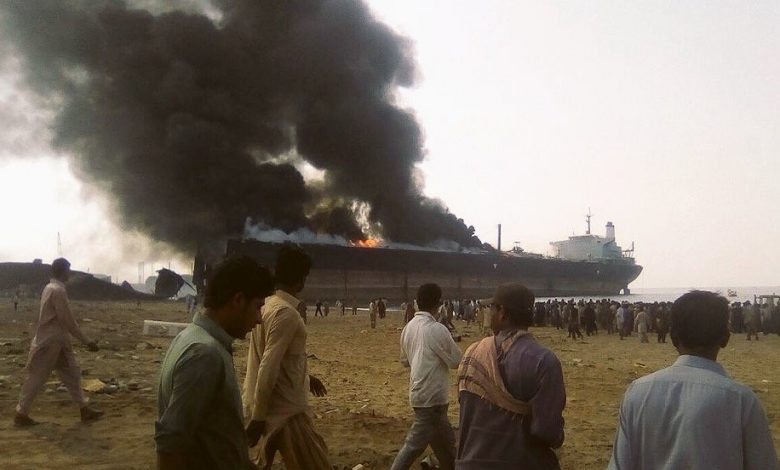
The tragic Gadani fire on a beached tanker that claimed many lives on November took place due to smuggling of oil, a report by the ministry for shipping and ports said on Thursday. The report showed the dire conditions for workers at Pakistan’s main recycling area as well as the fact that Gadani has become a hub for the smuggling of foreign goods.
The ship, which burned for four days, was carrying 132 metric tons furnace oil, 1,100 tons of sludge, 27 metric tons of diesel and 30,000 metric tons of lubricants, investigators have found.
“A huge quantity of lubricants smuggled by the shipowner had caught fire due to mishandling of work managers,” ports and shipping Minister Mir Hasil Khan Bizenjo told The Express Tribune.
“According to the Customs rules and regulations, decommissioned vessels are only allowed to carry a fixed quantity of oil required for their voyage from a port of departure to Gadani shipbreaking yard in Pakistan,” he added.
Bizenjo admitted the rules are flouted with impunity, often in connivance with officials.
“Businessmen acquire decommissioned ships for scrap from different parts of the world and bring them to the United Arab Emirates where they are filled with lubricants which are then smuggled into Pakistan,” Bizenjo told the local newspaper.
Work at the yard, one of the chief shipbreaking sites in the world, will resume next week.
While there are 26 confirmed deaths from the accident, the actual death toll is thought to have hit triple figures with many trapped workers thought to have been incinerated during the four day blaze.
